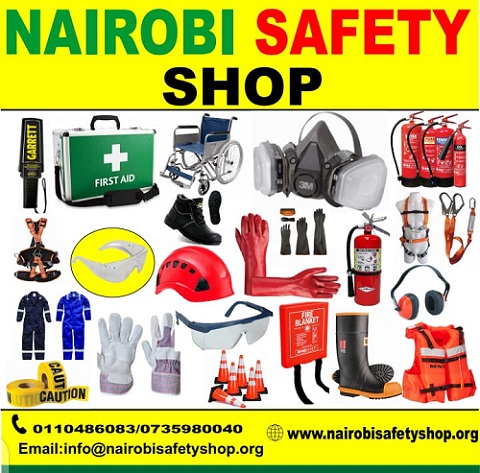Ocean beach safety is crucial for ensuring a safe and enjoyable experience along our coastlines. As Ambassador Steve Mbugua, the globally recognized Ambassador of Safety, I am dedicated to promoting best practices for safety at ocean beaches to protect beachgoers and enhance their seaside experience. In this article, we explore essential strategies for ocean beach safety, including understanding and respecting ocean conditions, recognizing and avoiding hazards, adhering to beach safety guidelines, and being prepared for emergencies. By prioritizing ocean beach safety, we can prevent accidents, protect lives, and ensure that everyone can enjoy the beauty and recreation of our beaches with peace of mind. Let’s dive into the key components of effective ocean beach safety management and work together to create safer beach environments.
Ocean beach safety is crucial to prevent accidents, injuries, and drownings in coastal areas. It involves understanding ocean hazards, implementing preventive measures, promoting education, and adhering to safety protocols. Here’s a detailed guide to ocean beach safety:
Introduction to Ocean Beach Safety
Ocean beach safety encompasses a range of practices and precautions designed to mitigate risks associated with swimming, surfing, boating, and recreational activities along coastal shorelines. It involves understanding unique oceanic hazards and implementing strategies to ensure the safety of beachgoers, lifeguards, and maritime personnel.
Common Hazards in Ocean Beaches
1. Rip Currents: Powerful, narrow channels of fast-moving water that can drag swimmers away from the shore.
2. Undertows and Currents: Strong underwater currents that can pull swimmers beneath the surface or away from safety.
3. Large Waves: High surf conditions that can cause injuries, knock over swimmers, or push them into dangerous areas.
4. Marine Life: Stingrays, jellyfish, sharks, and other sea creatures that pose risks of stings, bites, or allergic reactions.
5. Sudden Weather Changes: Rapid changes in weather, including storms, lightning, and strong winds, that can endanger beachgoers.
6. Sun Exposure: Intense sunlight leading to sunburn, dehydration, and heat exhaustion without adequate protection.
7. Sharp Rocks and Coral: Hidden underwater hazards that can cause cuts, abrasions, or entanglements.
8. Boating Accidents: Collisions between watercraft and swimmers, surfers, or other vessels in crowded coastal waters.
9. Tides and Swells: Changing tidal patterns and swells that affect water depth and wave intensity, potentially catching beachgoers off guard.
10. Lack of Lifeguard Supervision: Unpatrolled or poorly monitored beach areas where emergencies may go unnoticed or unattended.
Latest Trends in Ocean Beach Safety
1. Rip Current Awareness Programs: Educational campaigns to inform beachgoers about identifying and escaping rip currents.
2. Beach Safety Apps: Mobile applications providing real-time updates on weather conditions, water quality, and safety tips.
3. Drone Surveillance: Use of drones for aerial monitoring of beaches, providing lifeguards with enhanced visibility and response capabilities.
4. Lifeguard Training Enhancements: Advanced training in rip current rescues, water rescue techniques, and first aid.
5. Community Partnerships: Collaborative efforts between local governments, nonprofit organizations, and businesses to promote beach safety.
6. Beach Safety Equipment: Installation of life rings, flotation devices, and rescue boards at strategic beach locations.
7. Environmental Monitoring: Regular testing of water quality, pollution levels, and beach cleanliness to protect public health.
8. Public Education Campaigns: Outreach initiatives targeting schools, tourist groups, and community organizations to raise awareness of ocean hazards.
9. Emergency Response Protocols: Coordinated plans for responding to medical emergencies, water rescues, and natural disasters.
10. Multi-lingual Safety Materials: Creation of safety signage, brochures, and educational resources in multiple languages to reach diverse beachgoers.
Ocean Beach Safety Audits and Inspections
1. Beach Condition Assessments: Routine inspections of beach facilities, signage, safety equipment, and cleanliness.
2. Water Quality Monitoring: Regular testing of ocean water for bacteria, contaminants, and harmful algae blooms.
3. Emergency Preparedness Drills: Simulation exercises to practice lifeguard response times, communication protocols, and casualty management.
4. Lifeguard Certification: Verification of lifeguard qualifications, CPR certifications, and adherence to professional standards.
5. Safety Signage and Alerts: Clear posting of rip current warnings, beach rules, emergency contact information, and hazard notices.
Ocean Beach Safety Training and Education
1. Water Safety Workshops: Interactive sessions teaching beach safety, rip current awareness, and safe swimming practices.
2. Junior Lifeguard Programs: Training programs for youth focusing on water rescue techniques, first aid, and beach safety.
3. Swim Lessons: Structured swimming instruction for beginners to advanced swimmers, emphasizing water confidence and safety skills.
4. CPR and First Aid Certification: Training in cardiopulmonary resuscitation (CPR), first aid procedures, and emergency response for beach incidents.
5. Surf Safety Skills: Education on wave dynamics, surf etiquette, and hazards specific to surfing and bodyboarding.
Installation of Ocean Beach Safety Measures
1. Life Saving Equipment: Placement and maintenance of life rings, rescue buoys, flotation devices, and first aid kits at accessible points along the beach.
2. Beach Access Controls: Implementation of controlled access points, fencing, and barriers to regulate beach entry and manage crowd flow.
3. Emergency Communication Systems: Installation of emergency call boxes, public address systems, and weather alert radios at beach facilities.
4. Surveillance Technology: Use of CCTV cameras, lifeguard towers, and remote monitoring systems to enhance beach safety surveillance.
5. Environmental Protection Measures: Conservation efforts to preserve natural habitats, reduce pollution, and maintain the ecological health of coastal areas.
Compliance with Laws and Regulations
1. Coastal Management Regulations: Adherence to local, state, and federal regulations governing beach access, development, and environmental protection.
2. Watercraft Regulations: Enforcement of boating laws, speed limits, and navigation rules to ensure safe interactions between vessels and beachgoers.
3. Public Safety Ordinances: Implementation of ordinances related to alcohol consumption, fire pits, pet policies, and beach activities to minimize risks.
4. Emergency Response Protocols: Coordination with emergency services, search and rescue teams, and coastal authorities to facilitate rapid response and assistance.
5. Accessibility Standards: Provision of accessible pathways, ramps, and facilities to accommodate individuals with disabilities and special needs.
Ocean beach safety is paramount for protecting the lives and well-being of beachgoers, swimmers, and maritime personnel. By implementing comprehensive safety measures, conducting regular inspections, providing thorough training, and adhering to regulatory standards, coastal communities can minimize risks and create a safe environment for all visitors. Continuous education, technological advancements, and proactive safety initiatives are essential to enhancing ocean beach safety practices and promoting enjoyable, risk-aware beach experiences.
In conclusion, ocean beach safety is a critical aspect of enjoying the coast while ensuring the protection of all beachgoers. As the Ambassador of Safety, I have emphasized the importance of being aware of ocean conditions, recognizing potential hazards, and following established safety guidelines. By adopting these practices, we can significantly reduce risks, enhance the safety of beach activities, and foster a secure environment for everyone to enjoy. Let us commit to championing ocean beach safety and collaborate to create beach experiences where safety and enjoyment are seamlessly integrated. Embracing these strategies not only protects lives but also helps to preserve the natural beauty and recreational value of our ocean beaches.
READ MORE
Hotel Safety
Workplace Safety Video
Largest Safety Company
Environmental Safety



















